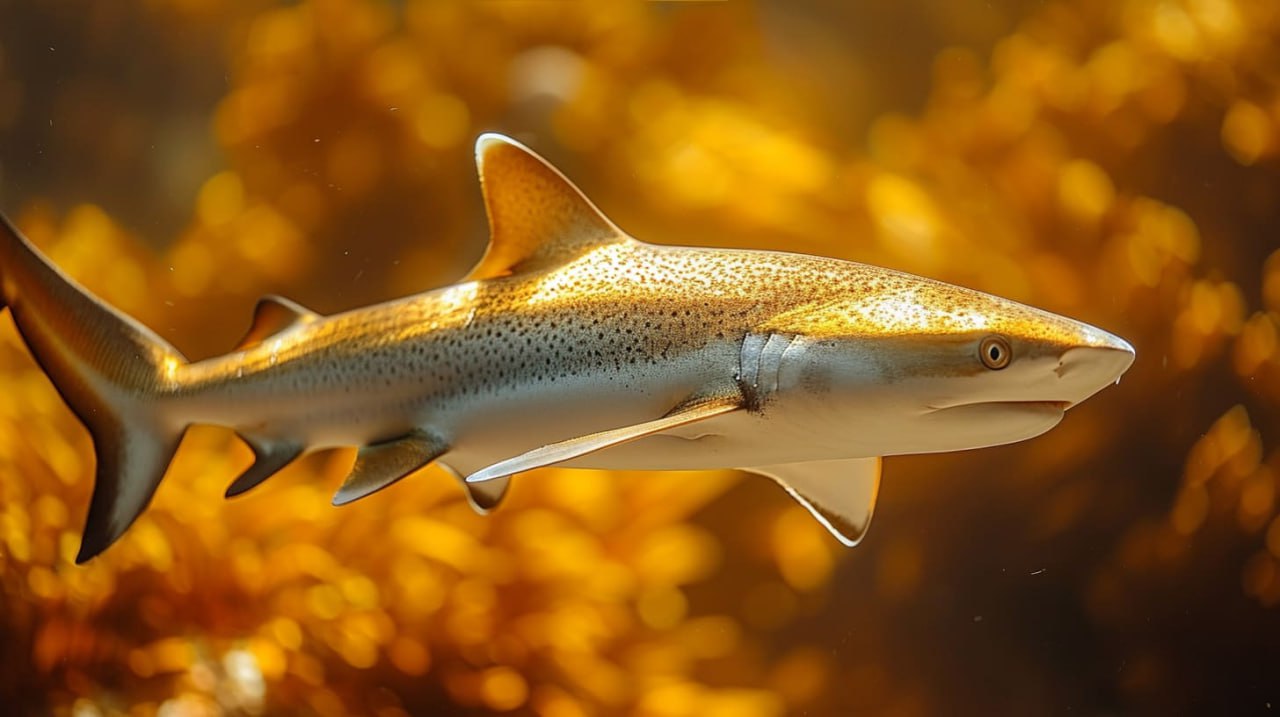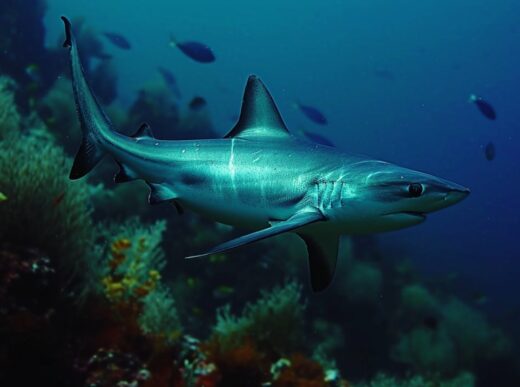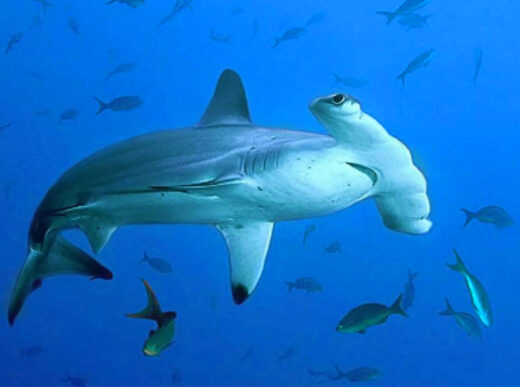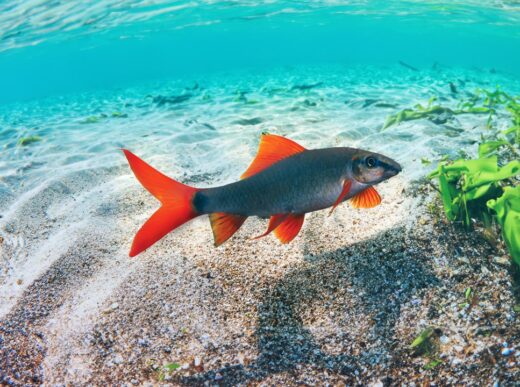Get ready for an underwater adventure as we explore the fascinating world of leopard sharks! These incredible fish, known for their vibrant colors, calm demeanor, and surprising predatory skills, are sure to capture your imagination. We’ve rounded up 20 fun and cool facts that will completely change the way you look at these triple-toothed sharks.
20 Amazing Facts About Leopard Sharks
Embark on an exciting journey through the mysterious waters where sharks reign supreme, and let’s explore the fascinating world of leopard sharks with their remarkable features.
Characteristics
1. Ever heard of the Leopard Shark? Well, it’s part of the houndsharks family, specifically in the subfamily Triakis. Fun fact: Triakis translates to “Three very sharp” in Latin—sounds intriguing, doesn’t it?
2. Now, within this Triakis subfamily, we’ve got five shark species, each with a name hinting at its distribution area. There’s the sharpfin houndshark, spotted houndshark, sharptooth houndshark, banded houndshark, and the stylish leopard shark we’re chatting about today.
3. Don’t expect leopard sharks to break any size records—they’re on the smaller side. Think around 2 meters in length and a lightweight 15–18 kilograms.
4. About those teeth—no, it’s not just three! Leopard sharks can sport up to 55 teeth, and here’s the cool part: they’re triple-toothed, featuring a sharp central apex and two smaller teeth on each side.
5. Fashion alert! The leopard shark is a real trendsetter. Picture this: a silvery back adorned with beautiful spots. It’s like the haute couture of the shark world!
Habitats
6. Wrap your head around this: triple-toothed sharks don’t play the world tour. Nope, they stick to pretty specific neighborhoods. The California squad hangs out in the northeast Pacific Ocean, cruising along the coasts of the U.S. and Canada. Meanwhile, the striped crew rocks the other side of the ocean, making waves off the coasts of Russia and Japan. Down south, the Ecuadorian and Peruvian posse chills by the coasts of—you guessed it—Ecuador and Peru. Oh, and don’t forget the Cape shark, strutting its stuff in the Atlantic Ocean off the chic coast of South Africa.
7. Here’s a quirky tidbit: these sharks are like Goldilocks when it comes to water temperatures. The northern gang likes it cool in the temperate latitudes, while the southern crew is all about those hot tropics and subtropics. It’s a tale of two temperatures!
Lifestyle
8. Leopard sharks are the night owls of the ocean! When the sun takes a break, these active predators gear up for some serious hunting in the surf zone. But come daytime, you’ll find these beauties taking a chill pill, lounging on the ocean floor amidst rocks and crevices. It’s like they’ve got a day job as underwater rockstars and a nightlife as stealthy hunters!
Eating Habits
9. Triple-toothed sharks are quite the culinary adventurers—they have a broad palate and consume a variety of offerings: from different fish and shrimps to crabs and mollusks. Their eclectic taste even extends to the occasional gulp of algae. It’s fascinating to witness these sharks explore the diverse menu the ocean has to offer!
10. Watching triple-toothed sharks hunt is like witnessing an underwater spectacle! The process is both fascinating and entertaining. Picture this: the sharks deftly extend their mouth tube, creating a vacuum to suck in their prey. With precision and speed, they then thrust their jaws forward, capturing the prey and securing it with their sharp teeth. It’s a remarkable display of hunting prowess, showcasing the sharks’ unique and efficient feeding strategy.
11. Talk about a dental care routine! Triple-toothed sharks have quite the interesting dental schedule. As they feast on various delicacies from the ocean, their teeth undergo rapid wear and tear. To keep up with their demanding dining habits, these sharks diligently replace their teeth every fortnight. It’s like having a built-in tooth renewal plan, ensuring they always have a sharp set of pearly whites ready for the next feast!
Intelligence and Social Behavior
12. The leopard shark has its social game on point! Imagine this: they’re not just living and hunting in packs, but these squads have their own age and gender segregation. It’s like a shark society where females have their own exclusive hunting parties, males stick together, and the youngsters do their thing separately.
13. And here’s the twist – these sociable sharks are not just hosting their own kind; they’re like the social butterflies of the sea, often mingling with other small sharks. Talk about a diverse underwater social scene!
Reproduction
14. Talk about an exclusive delivery style – leopard sharks are all about oviparity! Picture this: the eggs start hatching while still inside the womb, and when they’re born, they’re like tiny shark nuggets, not more than 20 centimetres long.
15. But here’s the real kicker – in a single batch of leopard shark babies, you can have anything from a solo debut to a full-on shark squad of 40! And get this, their moms host these little ones in the algae-thick areas, providing both protection and a snack bar. Parenthood goals, right?
Population
16. Good news – the triple-toothed shark squad is thriving, and there’s no red alert for their survival! However, it’s not all smooth sailing for our stripey friends. The striped triple-toothed shark is feeling the heat due to its popularity in Chinese and Japanese cuisine, where it’s the star of the gourmet show. Keep swimming strong, little sharks!
Danger To Humans
17. No need to worry about a shark encounter during your underwater adventures! The triple-toothed shark is more into peaceful coexistence than underwater drama.
18. However, humans are the ones causing a stir, as these sharks face threats from overfishing for their meat. Let’s keep the oceans safe for our finned friends!
Are There Any Aquariums with Leopard Shark?
19. If you’re enchanted by the allure of these beautiful and harmless sharks, you’re in luck! You can observe them in their natural habitat off the coasts of California, in the waters of Peru, and along the shores of South Africa. Dive into the ocean world and witness the grace of the triple-toothed sharks!
20. The bright side is that leopard sharks adapt well to captivity, although their lifespan is shortened. Typically, these sharks thrive in aquarium settings for up to 5 years. Many oceanariums, including those in China, Japan, and various countries, house these captivating creatures for enthusiasts to admire.
Here are a few aquariums that may have featured leopard sharks:
- Monterey Bay Aquarium (USA):
- Location: Monterey, California, USA.
- Website: Monterey Bay Aquarium
- Shanghai Ocean Aquarium (China):
- Location: Shanghai, China.
- Website: Shanghai Ocean Aquarium
- Aquarium of the Pacific (USA):
- Location: Long Beach, California, USA.
- Website: Aquarium of the Pacific
- Oceanogràfic València (Spain):
- Location: Valencia, Spain.
- Website: Oceanogràfic València
- Dubai Aquarium & Underwater Zoo (UAE):
- Location: Dubai, United Arab Emirates.
- Website: Dubai Aquarium & Underwater Zoo
- Acquario di Genova (Italy):
- Location:Genoa, Italy.
- Website: Acquario di Genova
- AQWA (Australia):
- Location: Perth, Western Australia.
- Website: AQWA
Please note that exhibits in aquariums can change, so it’s advisable to verify the current displays by checking the official websites or contacting the aquariums directly for the most accurate and up-to-date information.




